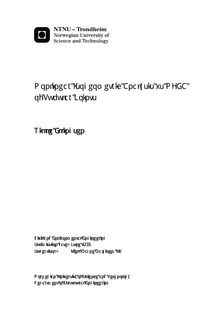Nonlinear Isogeometric Analysis vs NFEA of Tubular Joints
Master thesis
Permanent lenke
http://hdl.handle.net/11250/237195Utgivelsesdato
2013Metadata
Vis full innførselSamlinger
Sammendrag
In 2005, Hughes et al. introduced the isogeometric analysis. One purpose was to eliminate the conversion between geometry model and analysis model in finite element analyses. NURBS (Non-Uniform Rational B-Splines) were adopted as shape functions and the isoparametric concept was utilized, resulting in the above mentioned analysis method.In this thesis, the differences between traditional finite element analysis and isogeometric analysis have been examined through nonlinear analyses of a gap K-joint subjected to prescribed displacements. The K-joint has been modelled both with solid and thin shell elements in Abaqus/Standard and with solid elements in IFEM. It has been focused on obtaining a mesh of similar refinement for both of the methods to easier be able to compare the results.The results show, as expected, that the thin shell element representation is unsuitable for a three dimensional stress state as around the intersection of the braces and the chord. The analyses with solid elements show a dependence on the continuity of the shape functions. The continuity in an isogeometric analysis is Cp-1 over element borders for basis functions of degree p. In traditional finite element analysis the continuity for solid elements is only C0. This results in differences in the differentiated variables like stresses and strain. Also the calculation of derived values, such as the von Mises stress and principal stresses, has shown to generate differences in the results because this is done differently in Abaqus/Standard and IFEM. The computational time for the isogeometric analyses is higher than for the traditional finite element analyses, and increasing with increasing degree of basis functions because the continuity affects the average bandwidth of the global matrices, and must also be included in the discussions.The conclusion is that more analysis results are needed to be able to make a substantiated conclusion as to which analysis method that is preferable for analyzing a gap K-joint.Regarding which method that is more accurate or conservative, the findings are not consequent.
